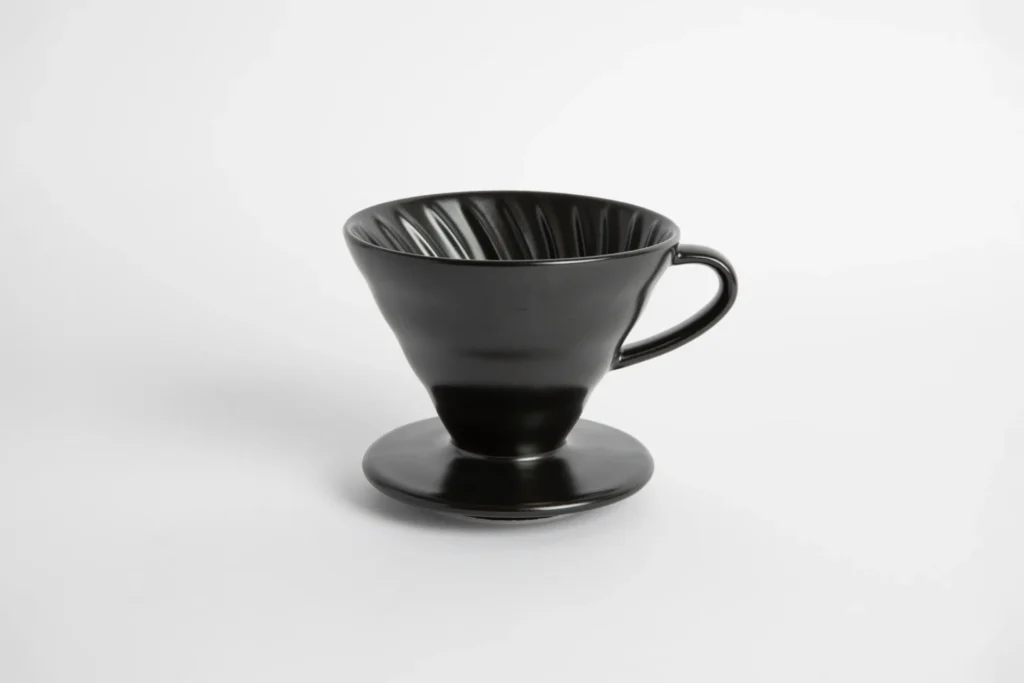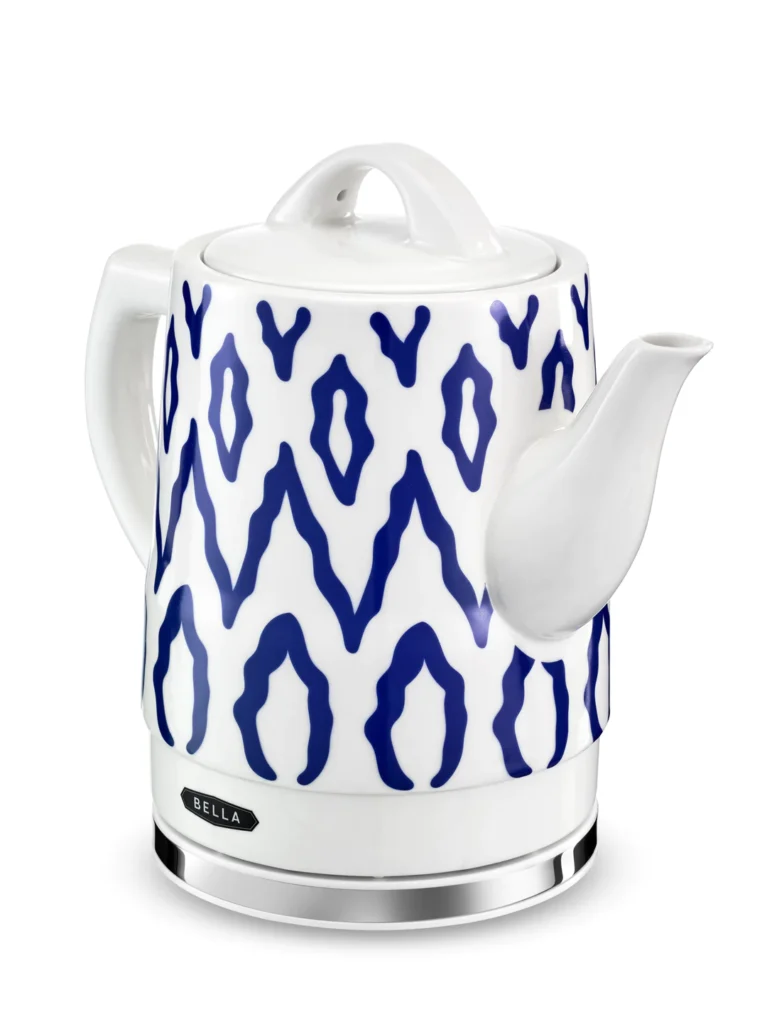How to Find a Non-Toxic Dutch Oven

It’s a classic piece of cookware for a reason: Dutch ovens can do it all! But unless you have some devious secret ingredients, you probably don’t want toxins anywhere near your dinner. Some Dutch ovens are made with hazardous materials that can end up in your food—and ultimately—in you. Not to worry! We’ll help you keep those forever chemicals out of the kitchen with some of our favorite non-toxic Dutch ovens.
What is a Non-Toxic Dutch Oven, Exactly?
Dutch ovens are wide, heavy pots with a tight-fitting lid. They are an incredibly versatile tool to have in any kitchen, as they can be used for slow cooking, roasting, baking, searing as well as even deep-frying.
Unfortunately, like many other kinds of cookware, they’re often manufactured with harmful materials that you definitely don’t want in your food. The most common chemicals of concern when it comes to conventional Dutch ovens can be found in the colored enamel and nonstick coating. These include:
- Cadmium
- Lead
- PFAS and PFOA
Even uncoated ovens aren’t immune to toxins, as high heat as well as acidic foods can cause aluminum and nickel to leach into food.
Non-toxic Dutch ovens are made without these toxic elements or designed to prevent heavy metals from getting into your food, making for a much safer meal.
Top 6 Non-Toxic Dutch Ovens: How We Chose
To bring you the best non-toxic Dutch ovens, we looked for high-quality, consciously-crafted cookware. After cutting out the chemically-treated competition, here’s how we found our favorites:
- Material: Cast iron, ceramic as well as porcelain are your best bet for safe cooking when they aren’t treated with toxic additives like PFAS.
- Quality: We found brands that keep it simple and clean without sacrificing high-performance standards.
- Versatility: You need a Dutch oven that can handle the heat—whether you’re prepping a roast or baking some bread.
Our Picks
All featured products are chosen at the discretion of the author and DGHQ editors. However, Do Good HQ may make a small affiliate commission if you click through and make a purchase.
1. Caraway Dutch Oven
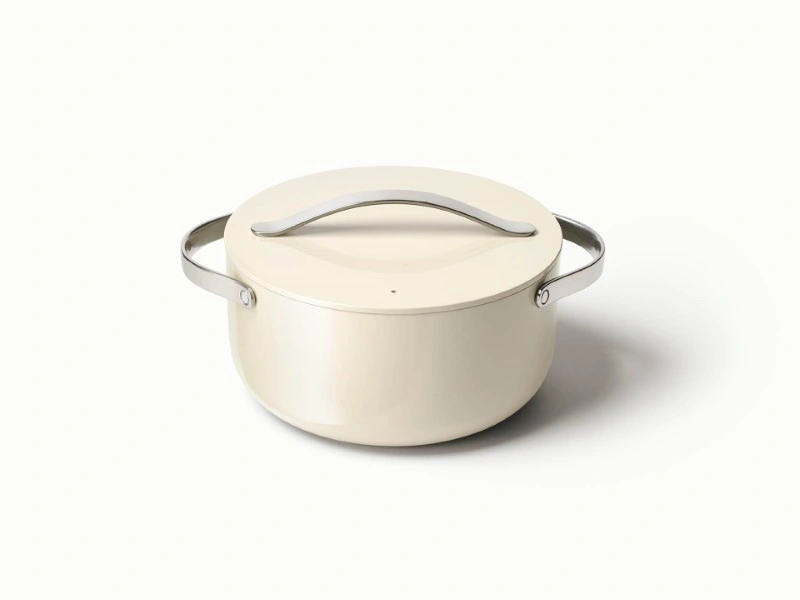
| Certifications | CA Prop 65 approved |
| Material | Ceramic |
| Capacity | 6.5 qt |
| Price at Publishing | $135 |
Caraway’s lead-free Dutch oven is made without any pesky forever chemicals, heavy metals, or toxic coatings. It’s oven-safe up to 550 degrees and comes in a variety of colors, so you can pick the pot that suits your style.
Highlights
Enjoy nonstick cooking with all the non-toxic perks. The ceramic coating keeps food from sticking and makes it easy to clean.
Things to Consider
Since the ceramic coating isn’t subject to a hard anodization process, it’s prone to chipping, so handle with care. Hand-washing is also recommended.
2. Our Place Perfect Pot
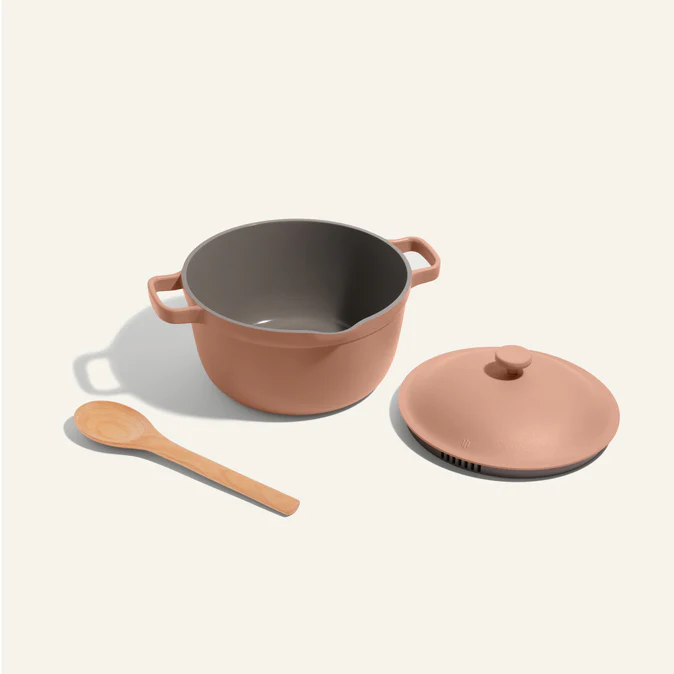
| Certifications | Not listed |
| Material | Aluminum and ceramic |
| Capacity | 5.5 qt |
| Price at Publishing | $109 (Spring Sale) |
Designed with function as well as fashion in mind, this non-toxic, nonstick pot is oven-safe up to 450 degrees and perfect for all your stove-top favorites. With a whole collection of accessories made to fit the pot, it’ll quickly become your go-to sous chef.
Highlights
This pot comes with a built-in strainer and a notched beechwood spoon that fits conveniently on the handles.
Things to Consider
The steam-releasing lid works well for some recipes, but it doesn’t effectively trap moisture or bake bread in a Dutch oven.
3. Xtrema Classic Oval Dutch Oven
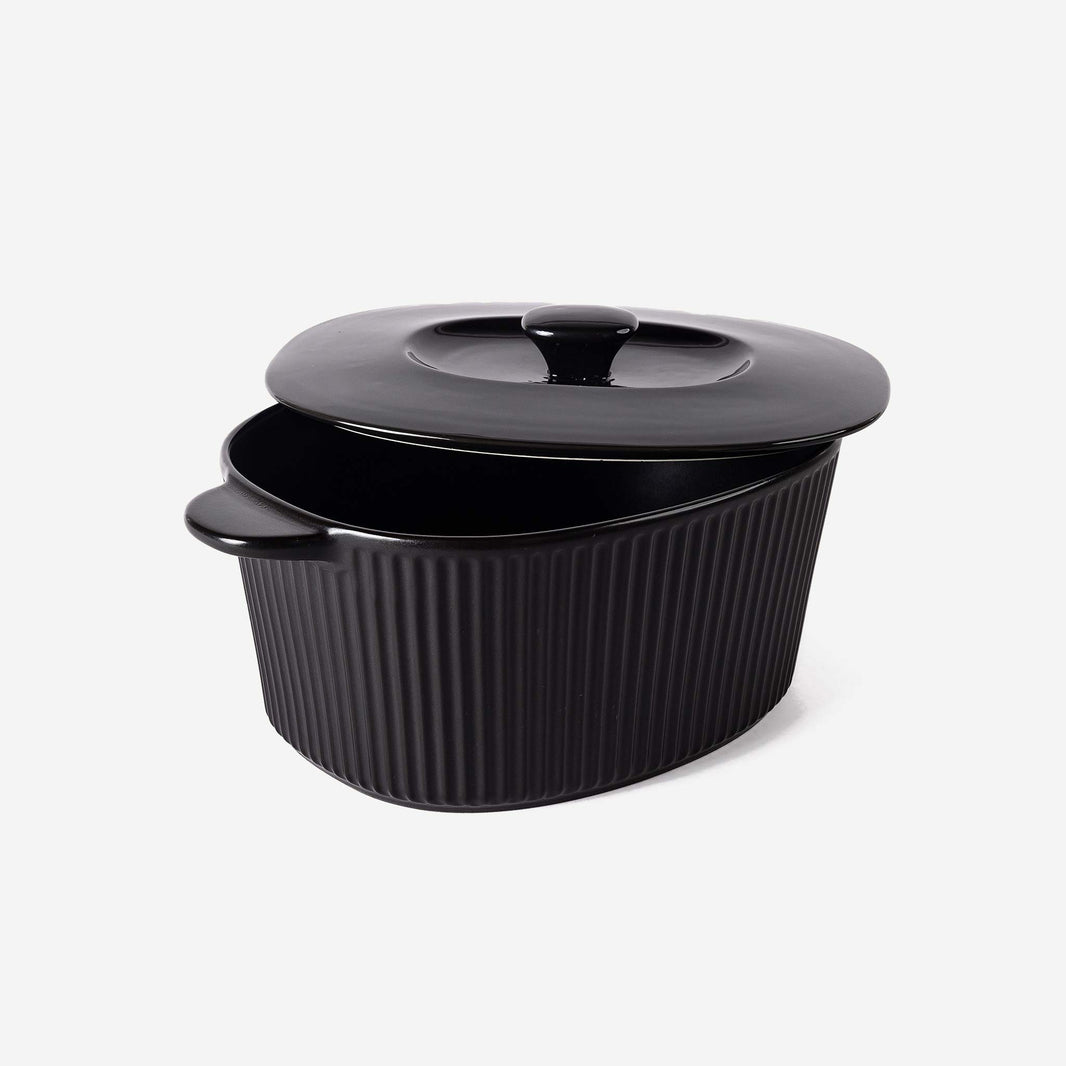
| Certifications | SGS-tested, FDA-approved |
| Material | Ceramic |
| Capacity | 7.5 qt |
| Price at Publishing | $349.99 |
It’s considered one of the best Dutch ovens for a reason. Xtrema’s stylish kitchen staple is made of 100% natural ceramic—which means no toxic coatings or leaching from a metal core. The elegant oval shape and textured exterior make it as pretty as it is practical.
Highlights
Xtrema offers a 30-day trial period, a 10-year warranty, and additionally a forever replacement program. And unlike some similar pots, this Dutch oven is dishwasher safe!
Things to Consider
At the time of publishing, this Dutch oven only comes in one (large) size.
4. Staub Enameled Cast Iron Round Dutch Oven
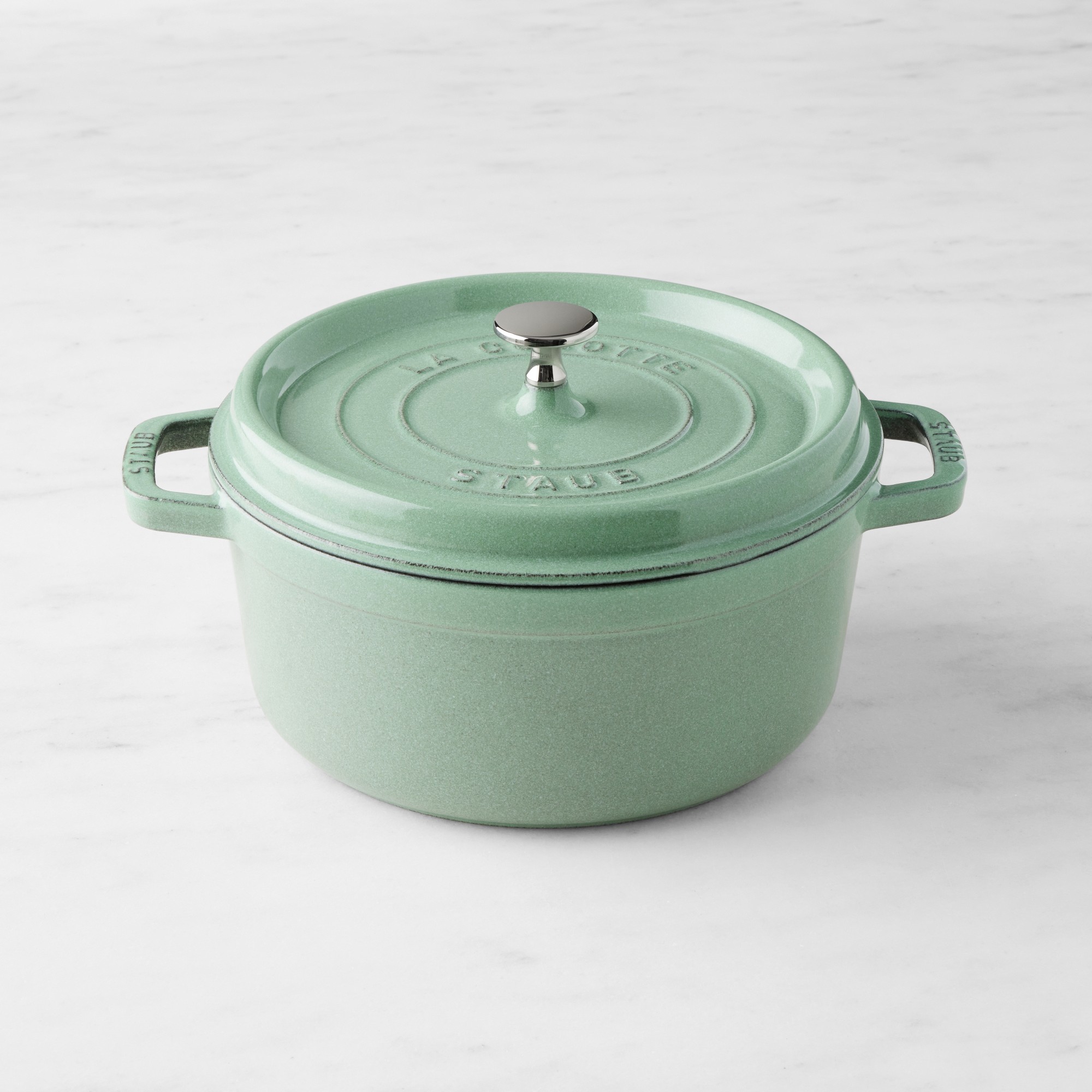
| Certifications | Not listed |
| Material | Cast iron and enamel |
| Capacity | 4-13.25 qt |
| Price at Publishing | $370-$660 |
Staub’s classic cast iron Dutch oven is durable and versatile, with a wide variety of colors, finishes as well as sizes to choose from. The heavy lid traps steam and, consequently, thanks to strategically spaced bumps on the inside, directs evaporating moisture back toward your food.
Highlights
This non-toxic gem is dishwasher-safe and rust-resistant.
Things to Consider
This option isn’t the most affordable on our list, but its durable design ensures it lasts! Avoid using metal utensils when cooking or serving to preserve the enamel.
5. Emile Henry Flame Round Stewpot Dutch Oven

| Certifications | Not listed |
| Material | Ceramic |
| Capacity | 2.6-6.3 qt |
| Price at Publishing | $120-$199.96 |
Bring home French excellence with this 100% ceramic, non-toxic Dutch oven. It’s strong enough to go from the freezer to the oven, and because there’s no metal core, it’s lighter than the cast-iron alternatives.
Highlights
Emile Henry crafts its ceramics using energy-efficient firing techniques and natural materials, making them healthier for you and the Earth! Being dishwasher-safe is just the cherry on top.
Things to Consider
Since they handcraft each item, slight variations may occur between products.
6. Budget Find: Lodge Enameled Cast Iron Dutch Oven with Lid
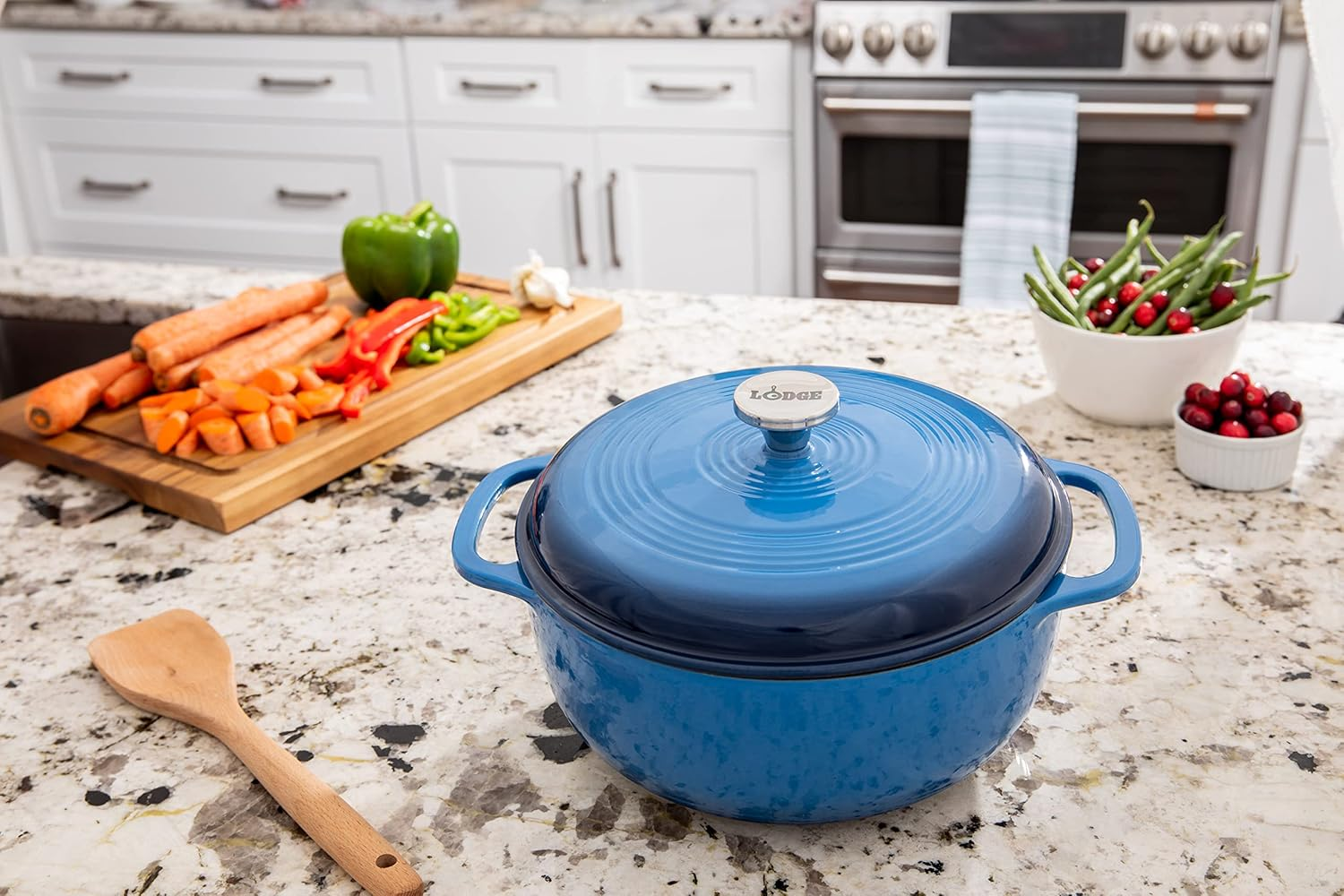
| Certifications | Not listed |
| Material | Cast iron and porcelain |
| Capacity | 6 qt |
| Price at Publishing | $71.08 |
If you’re here for form and function without a hefty price, this affordable non-toxic Dutch oven is your answer. The porcelain enamel is durable, chip resistant, and it also comes in a variety of palate-pleasing colors.
Highlights
The cast-iron core means even heating through the bottom and side, perfect for stews and roasts. Lodge also prides itself on taking part in eco-friendly initiatives like the Tennessee Green Star Partnership and the Energy Star Challenge.
Things to Consider
While it’s technically dishwasher safe, the makers recommend hand washing it with a nylon brush to preserve the finish.
How to Choose the Best Non-Toxic Dutch Oven for You
So, now that you know your options, how do you pick the perfect PFAS-free pot? When you’re ready to commit to a new member of the cookware family, here are a couple of points to note:
- Materials: Dutch ovens made with metal cores are great for retaining heat and are generally less prone to wear and tear. Ceramic is more delicate but lighter and easier to handle.
- Certifications: While not every pot worth using can hold up a gold star, it’s worth seeking out brands whose claims are verified by third parties. Look for products that demonstrate their commitment to health as well as safety standards through thorough testing, approval, or recognition.
With a lot of options and a little luck, there’s no doubt you’ll find the perfect non-toxic Dutch oven for safe, sustainable, satisfying meals.
More Non-Toxic Kitchen Appliances to Consider
Looking for more ways to detox your kitchen? We’ve got you covered:
- Where to Find the Safest Bakeware: 6 Brands We Love
- Non-Toxic Meal Prep Containers: How to Find Your Best Fit
- PFOA- and PTFE-Free Air Fryer
Frequently Asked Questions (FAQs)
1. Can you use a Dutch oven on the stove?
Absolutely! Dutch ovens are meant to be versatile, multipurpose pieces of cookware, and they can generally be used in an oven, on a stovetop, and even on a grill! Of course, it’s always good to double-check the product specs, just to be safe.
There are a couple of culinary details to keep in mind, however. Since you want your dish to heat evenly, be sure the size and shape of your Dutch oven suits your stove’s burners. A large, oval Dutch oven, such as the Xtrema Classic, is perfectly safe to use on the stove, but it might not work best for smaller burners.
If you have a glass stovetop, you’ll also want to take care not to scratch it when dragging, shifting, or rotating any enamel or cast-iron cookware on the surface.
2. Are Dutch ovens dishwasher safe?
Sometimes yes, but sometimes no—it all depends on the finish. There are many great Dutch ovens that you can toss into your dishwasher without a second thought, but some pretty pots require a little more TLC.
The Emile Henry Flame Round Stewpot, for example, proudly boasts its dishwasher safety. The Lodge Enameled Dutch Oven, on the other hand, is technically dishwasher safe, but the manufacturers recommend washing by hand to preserve the finish.
This is a pretty good rule of thumb for most Dutch ovens. A couple of cycles in the dishwasher once in a while likely won’t do them any harm, but over time the harsh wash cycles can wear down the enamel or nonstick finish. This can expose the cast-iron core and cause it to rust.
As always, see what the manufacturer recommends for keeping your Dutch oven in tip-top shape. If you’re unsure, it never hurts to opt for washing your pot by hand with warm water, soap, and a non-abrasive sponge.
3. What is the origin of the name Dutch oven?
As with most centuries-old historical accounts, there is some dispute about the definite origins of the name “Dutch oven.” Here are some of the most popular theories:
- In 1704, Abraham Darby, a partner at a British brass works company, traveled to the Netherlands to learn famous Dutch casting methods. These produced high-quality pots for a lower price than English counterparts, and Darby wanted to know how. He studied unique Dutch brass-casting techniques, like using sand molds instead of clay. Back in England, he realized he could create finer, more affordable kitchenware with a cheaper material: iron. After trial and error, Darby successfully cast iron into sturdy cooking pots. In 1707, he trademarked his Dutch-derived sand molding technique, and the “Dutch-style” oven was born.
- In the 18th and 19th centuries, Dutch ovens came to the Americas in the packs of European colonizers. They were a favorite for travelers because their extreme durability and versatility meant they didn’t need to lug around a dozen different pots and pans to bake, boil, stew, fry, or roast a meal—it was a culinary multi-tool!
- In the American colonies, Dutch ovens were made shallower, their lids flatter, and also a raised lip (or lid flange) was added to the brim to keep coals out of the food.
- People credit Paul Revere’s creative mind for inventing the ingenious tripod oven idea and flat top design, adding an extra dash of Americana.
To make a long story slightly less long, the Dutch oven has been a favorite over cooking fires and in household kitchens for centuries. We can thank some skilled Dutch metalworkers and lots of creative craftspeople for bringing us a cooking staple that has truly stood the test of time!
Featured image via Xtrema

